STATEHOUSE REPORT | ISSUE 21.22 | JUNE 3, 2022
BIG STORY: Podcast reveals famous Charleston resident you might not know
NEWS BRIEFS: Gun violence is getting leaders’ attentions
LOWCOUNTRY, Ariail: No vaccine for hate
COMMENTARY, Brack: New graduates should inspire parents, leaders
SPOTLIGHT: Conservation Voters of South Carolina
FEEDBACK: Send us your comments
MYSTERY PHOTO: Classic building
Podcast reveals famous Charleston resident you might not know
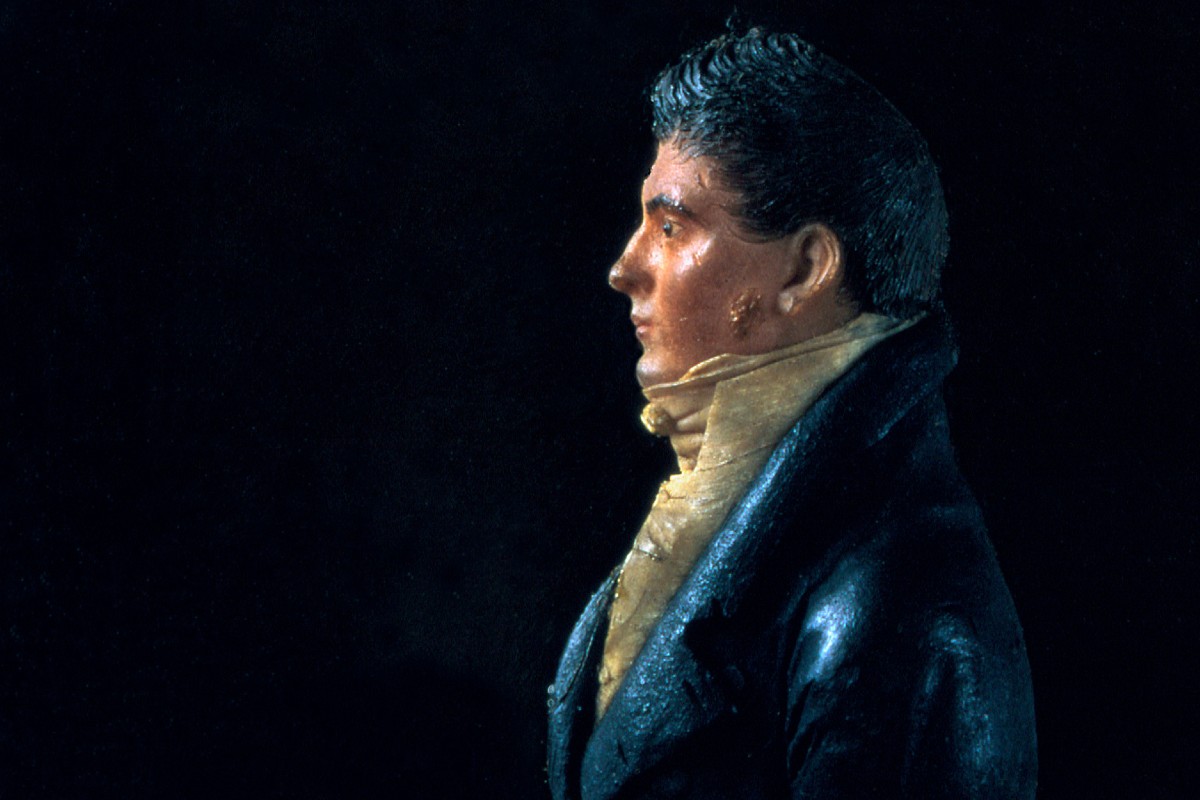
By Andy Brack
A former Charleston resident is world-famous, even though you’ve probably never heard of him.
But mention James Hoban’s life work as designer and builder of The White House – and you immediately understand his place in American history.
“From 1792 to 1831, almost 30 years, James Hoban was involved in the building, rebuilding and additions to the White House,” White House Historical Association (WHHA) President Stewart McLaurin said in an interview. “Here’s a man who really isn’t known in Washington or Charleston, but his life’s work is known the world over by three words, ‘The White House.’”
The association now has a new podcast that focuses on the years Hoban, an Irish immigrant, spent in Charleston before moving north to design and build the White House. His story blends architectural history and historic preservation, McLaurin said.
“He was bringing with him a stylistic influence on the mechanics of architecture,” said McLaurin, who has written a book on Hoban, too. “On the other hand, he knew how to draft. At that time, that really was a nuance of ideas coming together in architectural education.”
Hoban, born in Ireland around 1755, studied drawing under an Irish architect and excelled. After a six-year apprenticeship, he emigrated in 1785 to the United States, landing in Philadelphia and establishing himself as an architect. Two years later, he was in Charleston where he and fellow architect Pierce Purcell established an architectural firm, carpentry business and drafting school.
One of his students was Robert Mills, who designed several classic buildings around the state as well as the Washington Monument. Also trained at the school: Enslaved craftsmen who worked on the company’s construction projects.
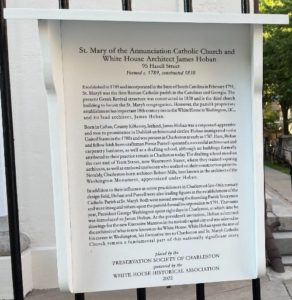 None of Hoban’s Charleston works survive today, McLaurin said, but the architect helped to rebuild the county courthouse after a fire. Meanwhile, Hoban’s place in history was marked in Charleston in 2022 when the WHHA and Preservation Society of Charleston erected a plaque about Hoban at St. Mary of the Annunciation Catholic Church on Hasell Street. The plaque outlines Hoban’s career, including how he was a founding member of the Charleston church, officially incorporated in 1791.
None of Hoban’s Charleston works survive today, McLaurin said, but the architect helped to rebuild the county courthouse after a fire. Meanwhile, Hoban’s place in history was marked in Charleston in 2022 when the WHHA and Preservation Society of Charleston erected a plaque about Hoban at St. Mary of the Annunciation Catholic Church on Hasell Street. The plaque outlines Hoban’s career, including how he was a founding member of the Charleston church, officially incorporated in 1791.
That same year when George Washington visited Charleston for eight days, he apparently saw several buildings that Hoban had been part of. At the time, Washington was under a deadline to get an executive building and the Capitol built by 1800. While there’s not a lot of information about what happened in Charleston in 1791, it’s clear Hoban made an impression on Washington because the first president summoned the architect to Philadelphia in 1792 to take part in a design competition for the White House. Hoban won.
Until his death in 1831, Hoban worked in the “federal city” that eventually took Washington’s name. From 1792 to 1800, Hoban oversaw design, building and deconstruction of the White House. The second president, John Adams, moved in in 1800. After a fire in 1814 during the War of 1812, Hoban spent three years rebuilding the residence. President James Monroe later had him build the White House’s south portico and President Andrew Jackson had him build the north portico.
But none of that may have happened had Hoban not been in South Carolina.
“This story of James Hoban, what he brought with him in his experience in Ireland, he refined and grew here in Charleston. And then he took with him to the federal city,” McLaurin said. “It became his life’s work.”
McLaurin’s book on Hoban is titled “James Hoban: Designer and Builder of the White House.”
- Have a comment? Send to: feedback@statehousereport.com.
Gun violence is getting leaders’ attentions
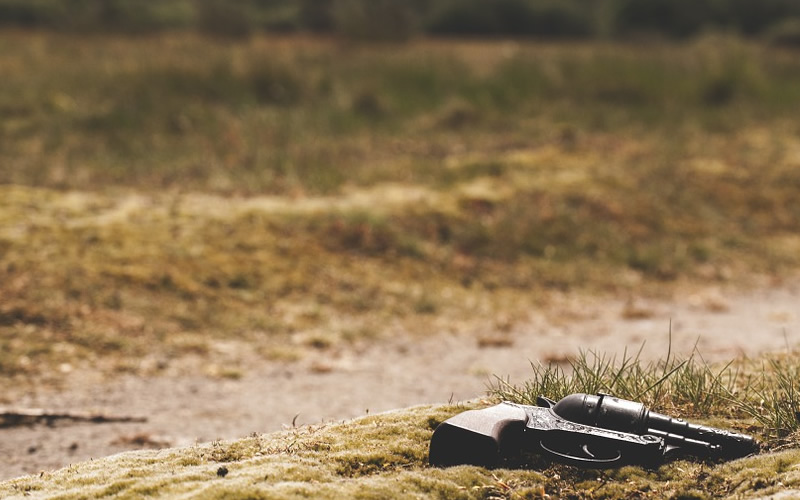
Staff reports | Some of South Carolina’s political leaders slowly seem to be getting the message that people want more about gun violence.
On Wednesday, Gov. Henry McMaster told The State newspaper his office was reviewing ideas and policies to reduce gun violence but he wasn’t specific about “what, if anything, we can and should do, (and) what would be good for South Carolina and make it safer.”
In Charleston after Monday night violence left nine shot and three law enforcement officers hurt, Mayor John Tecklenburg on Tuesday said the city would pursue eight “action steps” to curb violence, including traffic control measures, shutting down excessive unpermitted events in public spaces and creating accountability standards for landlords.
And one Charleston-area state senator who has been reliably Republican in his views on gun control – including the right for a person who passes a background check to own a high-capacity assault rifle – said he’d push harder for better background checks.
“I’m for whatever you can do to improve the federal background check,” said state Sen. Chip Campsen, in a recent interview with the Charleston City Paper. “But the truth is, it’s the federal government’s incompetency. They don’t have to stick with this incomplete, insufficient database while in the same building. They have a much more robust database.”
That more robust database, he said, allows agents and even businesses to look at warrants, orders issued by judges and documents.
“This is what businesses have access to when they do a background check,” Campsen said. “Why does the federal government prohibit that database from being used for the purpose of background checks for purchase of weapons? It’s much more accurate. If that database had been in play, you probably would have realized that Dylann Roof couldn’t have owned the weapon … And it’s still that way today. Why is that?”
– Chris Dixon and Skyler Baldwin, both of the City Paper staff, contributed to this report.
In other recent news:
![]() Legislature to return June 15. Members of the S.C. General Assembly will return to Columbia noon June 15 to consider the state’s $14 billion budget as well as any bills that have been pushed through conference committees.
Legislature to return June 15. Members of the S.C. General Assembly will return to Columbia noon June 15 to consider the state’s $14 billion budget as well as any bills that have been pushed through conference committees.
Politics heats up. As voters started heading to the polls early this week, politics is heating up ahead of the June 14 primary. Democratic gubernatorial candidate Mia McLeod is accusing opponent Joe Cunningham of refusing to participate in a televised debate ahead of the June 14 primary. Cunningham rebutted that he had dropped out of the scheduled June 1 televised debate because the sponsors of the televised event were tied to McLeod’s campaign. Meanwhile, in the GOP primary race to represent voters in the 1st Congressional District, U.S. Rep. Nancy Mace’s campaign recently released a 30-second ad asking, “Can we trust Katie Arrington?,” calling out Arrington’s lost security clearance at the Pentagon.
Covid cases increase. State health officials this week reported 8,648 total new cases of Covid-19 — a slight increase over last week’s 7,044 — and two total new deaths, compared to last week’s three. As of June 1, 214 Covid-19-positive individuals were hospitalized, and eight were on ventilators, compared to last week’s 199 hospitalizations and eight ventilators.
This week marks the eighth consecutive week of rising Covid cases in the U.S., according to federal data. The country is reporting nearly 110,000 new cases every day on average, and more than 3,500 virus-positive Americans are being admitted to the hospital each day.
Big broadband grant. A $7.2 million grant from the Federal Communications Commission will allow a South Carolina pilot program to have three years of funding to enable technology at five federally-qualified health centers and one hospital in a statewide, nonprofit telehealth network operated by Palmetto Care Connections. The funding will provide broadband internet access services, remote patient monitoring and video consults to 5,000 primarily low-income South Carolinians suffering from chronic conditions and infectious diseases. In addition, according to a press release, “the funding will provide health care provider broadband data connections, a connected care telehealth platform and data analytics to facilitate synchronous telehealth services for an estimated 18,000 patients in 13 counties, an overall average of 80 percent of which are low-income.”
S.C. city populations grow. South Carolina cities have seen a 1.4% increase from recent Census Bureau data. Rural communities, on the other hand, have seen a decline as younger residents flock to larger cities for more opportunities.
- Want more headlines every business day that are like this? Visit our friends at SC Clips.
No vaccine for hate
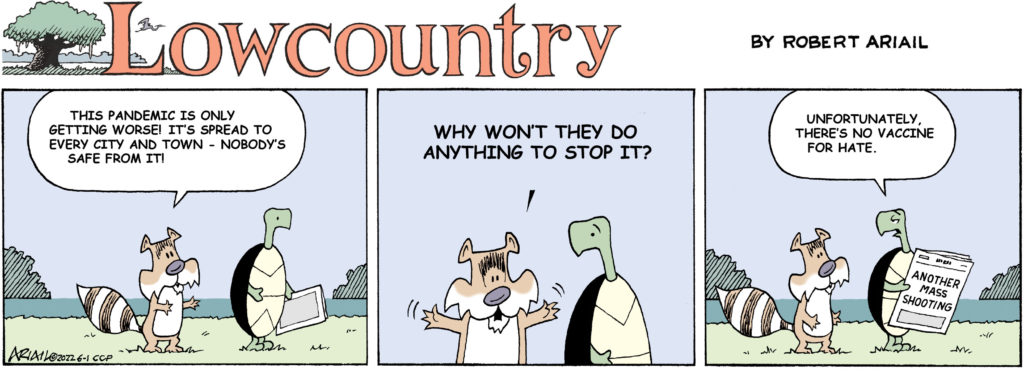
Cartoonist Robert Ariail often interprets things a little differently, but always has an interesting take on what’s going on in South Carolina. Love the cartoon? Hate it? What do you think: feedback@statehousereport.com.
New graduates should inspire parents, leaders

By Andy Brack | Their eyes are bright, joyous, excited, buoyant. Their voices titter with nervous excitement, not wholly sure of exactly what’s going to happen next. They are emerging from the cocoon of school and now are high school graduates. They are leaving, as one student observed, the place where they grew up.
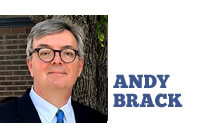 “We opened wounds, watched them bleed and watched them heal,” another student leader reflected.
“We opened wounds, watched them bleed and watched them heal,” another student leader reflected.
All across America, it’s the season of milestones. These bright-eyed, bushy-tailed young adults reek of potential as they prepare for what’s next. Many will head to college. Some will begin work. Most will do both. Regardless, it’s going to be something new, refreshing, grueling.
As they gathered for graduations under the proud eyes of misty parents, it was remarkable to see, at least for a moment, how days and days of high school angst, jealousies and tempestuous drama temporarily evaporated. At one graduation – and it’s likely true across the country – they massed as a team, a group reflective of a generation eager to take on the next challenge, any challenge.
“It only gets better from here,” one graduation speaker observed with a blend of anxiety and determination.
Advice and reminders flowed from graduates as if the ceremony were a locker-room pep talk:
- Keep going, regardless of what life throws at you.
- You’re ready – just do it.
- Take risks.
- Persevere.
- Make your future happen – anything is possible.
There’s an innocence to these thoughts that inspires. But they smother the mutterings of grumps, curmudgeons and cynics who think the latest generation isn’t worth much. And while it’s true life will throw curveballs at these fresh graduates that may sour them some, the bubble they’re in for the moment is electric with potential.
Witnessing what’s happening to these new graduates makes one feel good about what’s going on across America in spite of the political and social negativity, the residual impact of the pandemic, the challenges of surviving and climate change.
What’s amazing – and is particularly evident at graduation time – is that these new graduates bristle with energy and zeal. Yes, they’re young, but they seem oddly ready to take on the world and what it throws at them – despite any failures of the current generation of leaders.
So as we toast the Class of 2022, let’s offer some reminders that may take the edge off of the years ahead:
Think. Don’t be rushed into doing something you don’t want to do. If you are unsure, think about what the right thing to do is. In your heart of hearts, you will know the right direction.
Have fun. You’re only here once. Make the most of it. Enjoy each day.
Finish the job. If you start something, see it through. Do it correctly.
Try new things. Explore our world. Taste different foods. Smell lavender fields in France. Make art. Live beyond South Carolina — and then come back and make it better.
Question. Don’t accept everything at face value. Question authority — and question those questioning authority.
Listen. Make a habit of slowing down and listening to what other people are saying. You’ll be surprised how much you can learn — and grow — just by listening.
Use common sense. Too many people seem oblivious about too many things. Whenever you encounter a decision point, examine it practically and use common sense to figure out the best choice.
Laugh. Don’t take things too seriously. Today’s drama will be forgotten by next year. Enjoy life. Laugh at it and yourself. A good sense of humor will take you a long way.
Andy Brack is publisher of the Charleston City Paper and editor and publisher of Statehouse Report. Have a comment? Send to: feedback@statehousereport.com.
Conservation Voters of South Carolina
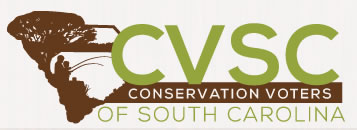 The Conservation Voters of South Carolina is a statewide nonprofit organization that fights for the Palmetto State’s air, water, land and energy through political action. The organization is bipartisan, pragmatic and effective.
The Conservation Voters of South Carolina is a statewide nonprofit organization that fights for the Palmetto State’s air, water, land and energy through political action. The organization is bipartisan, pragmatic and effective.
Through scorecards and advocacy at the Statehouse, CVSC holds South Carolina legislators accountable for their votes and actions. As a small organization that operates as a nonprofit and has a political action committee, we have a big impact. Learn more today by clicking any of the links below:
Send us your thoughts
Have a comment? Send your letters or comments to: feedback@statehousereport.com. Make sure to provide your contact details (name, hometown and phone number for verification. Letters are limited to 150 words.
Classic design
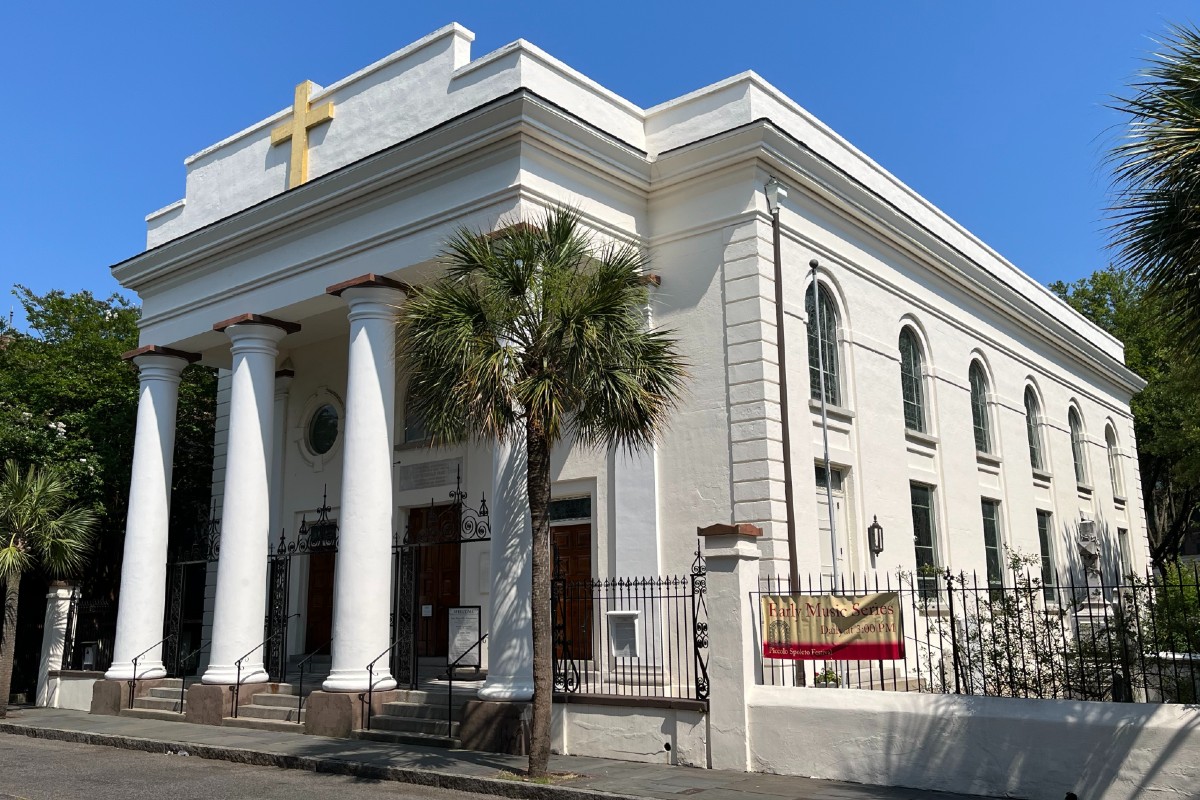
Here’s a Greek Revival building to tickle your sleuthing abilities. Where is it? What is it? Send your guess to feedback@statehousereport.com — and remember to include your name, home city and contact information.
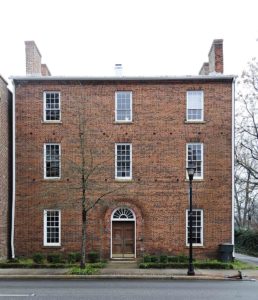 Last week’s mystery, “Three stories of brick,” is the Wilson House, which served as the jail for the York area in the early 1800s. George Graf of Palmyra, Va., who was one of several sleuths who identified the photo, shared, “This brick structure served as the York District’s jail for 23 years. The jail was built in 1828 by Thomas B. Hoover and is thought to have been designed by South Carolina’s most famous architect, Robert Mills. In or about 1851, the commissioners petitioned to sell the structure so a new facility could be built further from the town’s center. William A. Latta purchased the property in 1853 for the sum of $9,710 and gave it to his daughter, Annie Latta Wilson, for whom the house is now named.”
Last week’s mystery, “Three stories of brick,” is the Wilson House, which served as the jail for the York area in the early 1800s. George Graf of Palmyra, Va., who was one of several sleuths who identified the photo, shared, “This brick structure served as the York District’s jail for 23 years. The jail was built in 1828 by Thomas B. Hoover and is thought to have been designed by South Carolina’s most famous architect, Robert Mills. In or about 1851, the commissioners petitioned to sell the structure so a new facility could be built further from the town’s center. William A. Latta purchased the property in 1853 for the sum of $9,710 and gave it to his daughter, Annie Latta Wilson, for whom the house is now named.”
Others who identified the picture include Allan Peel of San Antonio, Texas; Jacie Godfrey of Florence; Elizabeth Jones and Jay Altman, both of Columbia; David Lupo of Mount Pleasant; Bill Segars of Hartsville; and Pat Keadle of Wagener.
>> Send us a mystery picture. If you have a photo that you believe will stump readers, send it along (but make sure to tell us what it is because it may stump us too!) Send to: feedback@statehousereport.com and mark it as a photo submission. Thanks.
- ORDER NOW: Copies are in Lowcountry-area bookstores now, but if you can’t swing by, you can order a copy online today.
- Now available as an e-book!
ABOUT STATEHOUSE REPORT
Statehouse Report, founded in 2001 as a weekly legislative forecast that informs readers about what is going to happen in South Carolina politics and policy, is provided to you at no charge every Friday.
- Editor and publisher: Andy Brack, 843.670.3996
Donate today
We’re proud to offer Statehouse Report for free. For more than a dozen years, we’ve been the go-to place for insightful independent policy and political news and views in the Palmetto State. And we love it as much as you do.
But now, we can use your help. If you’ve been thinking of contributing to Statehouse Report over the years, now would be a great time to contribute as we deal with the crisis. In advance, thank you.
Buy the book
Now you can get a copy of editor and publisher Andy Brack’s We Can Do Better, South Carolina! ($14.99) as a paperback or as a Kindle book ($7.99). . The book of essays offers incisive commentaries by editor and publisher Andy Brack on the American South, the common good, vexing problems for the Palmetto State and interesting South Carolina leaders.
More
- Mailing address: Send inquiries by mail to: P.O. Box 21942, Charleston, SC 29413
- Subscriptions are free: Click to subscribe.
- We hope you’ll keep receiving the great news and information from Statehouse Report, but if you need to unsubscribe, go to the bottom of the weekly email issue and follow the instructions.
- Read our sister publication: Charleston City Paper (every Wednesday in print; Every day online)
- © 2022, Statehouse Report, a publication of City Paper Publishing, LLC. All rights reserved.
















 We Can Do Better, South Carolina!
We Can Do Better, South Carolina!